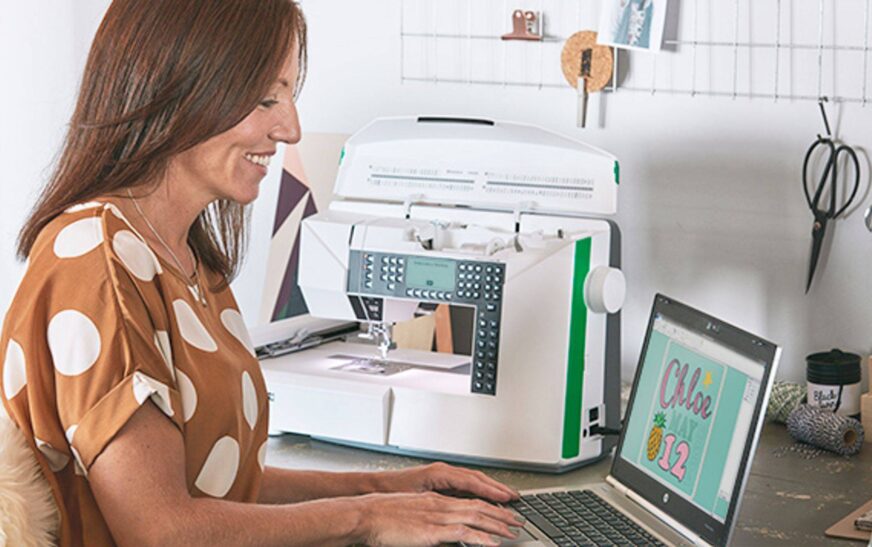Converting SVG (Scalable Vector Graphics) files to JEF (Janome Embroidery Format) is a common task for embroidery enthusiasts and professionals. However, it comes with its set of challenges. This article will explore these challenges and provide practical solutions to ensure a smooth SVG to JEF conversion process.
Understanding SVG and JEF Formats
What is SVG?
SVG stands for Scalable Vector Graphics. It is a widely-used XML-based vector image format that supports interactivity and animation. SVG files are resolution-independent, meaning they can be scaled to any size without losing quality.
What is JEF?
JEF is the proprietary embroidery format used by Janome sewing machines. It contains stitching instructions, including stitch order, colors, and types of stitches. Unlike SVG, JEF is not a vector format but a specific embroidery format that machines can read and execute.
The Importance of Converting SVG to JEF
Converting SVG to JEF is crucial for creating intricate and precise embroidery designs. SVG files allow for detailed and scalable designs, which can then be translated into stitch patterns for embroidery machines using the JEF format.
Common Challenges in SVG to JEF Conversion
1. Handling Complex Designs
Challenge
Complex SVG designs with numerous paths, shapes, and layers can be difficult to convert into JEF format. The intricacies of the design might not translate well into embroidery stitches, resulting in a loss of detail or quality.
Solution
Simplify the design before conversion. Break down complex paths and layers into simpler components. Use software like Adobe Illustrator or Inkscape to clean up the design, removing unnecessary details and ensuring that each element is easily translatable into stitches.
2. Managing Color Palettes
Challenge
SVG files can contain a wide range of colors, gradients, and transparencies, which are not always compatible with the limited color capabilities of embroidery machines.
Solution
Reduce the number of colors in the SVG file to match the thread colors available for your embroidery machine. Use color management tools in your design software to create a palette that closely matches your thread selection. Additionally, avoid using gradients and transparencies, as these cannot be directly translated into embroidery stitches.
3. Ensuring Stitch Precision
Challenge
SVG files are vector-based, meaning they do not inherently contain stitch information. Converting these designs into precise stitches that align correctly can be challenging.
Solution
Use specialized embroidery software like Wilcom, Hatch, or Brother’s PE-Design to convert SVG files to JEF. These programs offer tools to map vector paths to specific stitch types, ensuring precision in the final embroidery output. Additionally, manually adjust stitch parameters, such as stitch length and density, to achieve the desired level of detail.
4. Dealing with Size and Scale
Challenge
Embroidery machines have limitations on the maximum and minimum size of designs they can stitch. Scaling SVG designs to fit within these constraints without distorting the design can be problematic.
Solution
Before converting, resize the SVG design to fit within the allowable dimensions of your embroidery machine. Ensure that the design maintains its proportions and that details remain clear at the new size. Use your embroidery software’s resizing tools to maintain stitch integrity during scaling.
Software Solutions for SVG to JEF Conversion
1. Inkscape with Ink/Stitch
Inkscape, a free vector graphics editor, can be used with the Ink/Stitch extension to convert SVG files to embroidery formats like JEF. Ink/Stitch provides a range of tools to create and modify embroidery designs directly within Inkscape.
2. Wilcom Embroidery Studio
Wilcom Embroidery Studio is a professional-grade software offering advanced tools for converting vector files to embroidery formats. It provides precise control over stitch types, densities, and sequencing, ensuring high-quality conversions.
3. Hatch Embroidery Software
Hatch is a user-friendly embroidery software that supports SVG to JEF conversion. It offers intuitive design tools and automatic digitizing features to simplify the conversion process, making it accessible for both beginners and professionals.
4. Brother PE-Design
Brother PE-Design is another robust option for converting SVG files to JEF. It includes a variety of digitizing tools and supports multiple embroidery formats, ensuring compatibility with various machines.
Best Practices for Successful Conversion
1. Start with a Clean SVG File
Ensure your SVG file is clean and free from unnecessary elements. Simplify complex designs and reduce the number of colors to match your embroidery thread selection.
2. Use High-Quality Software
Invest in reliable embroidery software that supports SVG to JEF conversion. The right software will provide the tools necessary to ensure precision and quality in your embroidery designs.
3. Test Your Designs
Always test your converted designs on a sample fabric before committing to the final project. This allows you to identify and correct any issues with stitch quality, alignment, or color accuracy.
4. Adjust Stitch Parameters
Manually adjust stitch parameters such as stitch length, density, and type to match the design requirements. This ensures that the final embroidery closely resembles the original SVG design.
5. Seek Professional Help
If you’re struggling with the conversion process, consider seeking help from professional digitizers. Companies like Absolute Digitizing offer expert embroidery digitizing services to ensure your designs are accurately converted and ready for stitching.
Conclusion
Converting SVG to JEF can be challenging, but with the right tools and techniques, you can achieve high-quality embroidery designs. By understanding the common challenges and implementing the solutions provided, you can ensure that your designs are accurately translated into stunning embroidered pieces. Always start with a clean SVG file, use high-quality software, and test your designs to achieve the best results.
Embroidery digitizing is an art that requires precision and attention to detail. By following the best practices outlined in this article by Absolute Digitizing, you can overcome the challenges of SVG to JEF conversion and create beautiful, intricate embroidery designs.
Embark on your embroidery journey with confidence, knowing that you have the knowledge and tools to achieve stunning results every time.
Feel free to submit more guest posts through Links Building Servcies - Best Prices. Buy Author Account / 1$ Guest Post Here






















